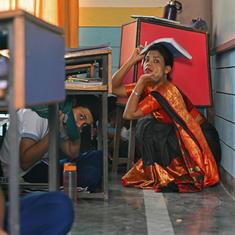Watch: Exactly what is inside your mobile phone? Scientists threw one into a blender to find out
The experiment aimed to show just how much of the earth’s resources are used each year in mobile phone production.
“We rely increasingly on our mobile phones but how many of us actually think what is behind the screen?" @PlymUniNews @GeoArjan @SciEngPlymUni @PlymEarth pic.twitter.com/ueMUdWfoER
— University of Plymouth (@PlymUni) March 14, 2019
How many of us know exactly what lies beneath the screen of our smartphones?
Researchers at the University of Plymouth in England came up with a unique way to find out – by tossing one into a blender.
The team of scientists blended an entire mobile phone and conducted a chemical analysis of the remains. The project was conceived by Arjan Dijkstra and Colin Wilkins, geologists from the University’s School of Geography, Earth and Environmental Sciences. They worked with an animation company to produce an eye-catching video of the experiment.
According to a press release, the scientists mixed the dust of the blended phone with sodium peroxide, a powerful oxidiser, at almost 500 degree Celsius. From the resultant solution, they found that the phone they used contained 33 gm of iron, 13 gm of silicon and 7 gm of chromium. Other critical elements, including tungsten, silver and gold were also found.
The experiment showed that between 10 and 15kg of ore have to be mined in order to manufacture a single phone. Now think about the amount of resources being used to manufacture 1.4 billion phones around the world every year
Wilkins said, “Mining can be part of the solution to the world’s problems. But we are now in a climate where people are becoming more socially responsible and interested in the contents of what they are purchasing.”
“Partly on the back of this, several of the major mobile phone companies have committed to upping their recycling rates,” she added. “It is a positive sign that the throwaway society we have lived in for decades is changing, and we hope this project will encourage more people to ask questions about their own behaviours.”









